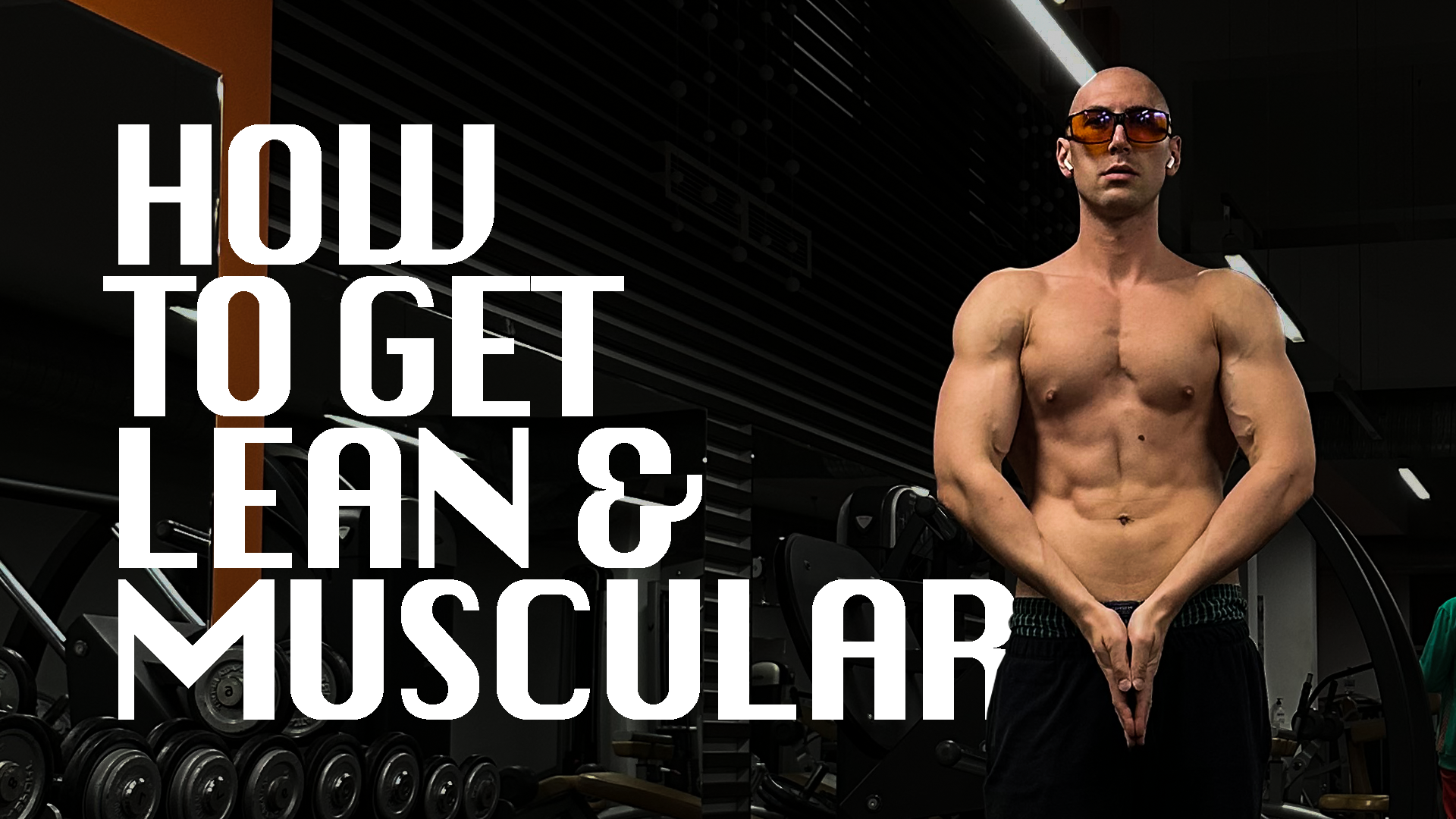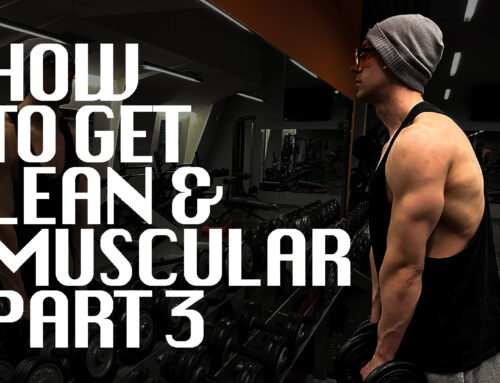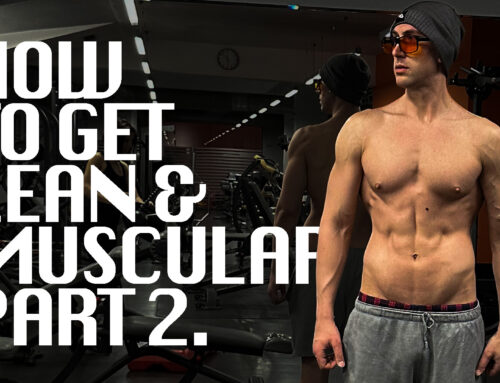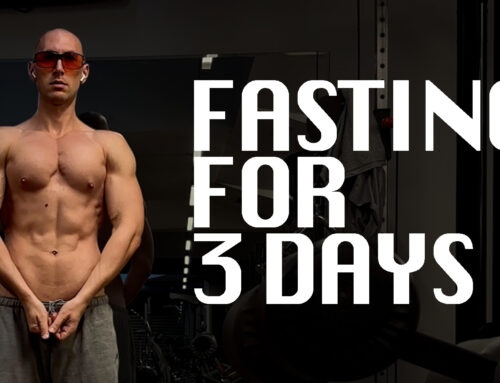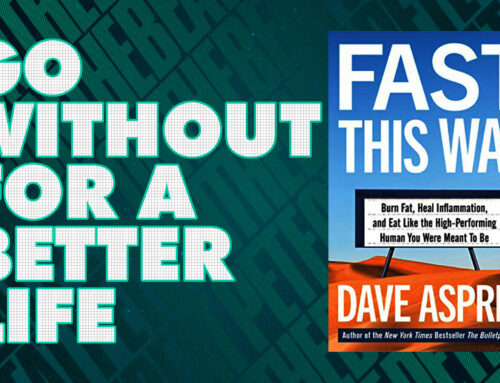Introduction
This video is a three-part series sharing “what I think” are the best and easiest ways to get and maintain a lean and muscular look. Said differently, I do my best to summarize how I built and continue improving my physique without restrictions and suffering.
This Part
Starting with nutrition, this part covers a few dietary approaches that changed my life; the second and the third will cover the role of willpower, such as what I do at the gym and my overall physical activity. I’ll keep things as simple as possible. And if my viewers are interested, I will elaborate on the mentioned subjects in future videos.
Disclaimer
The purpose of this content isn’t to argue my approach is better than the others. Nor to claim one method as more scientific. Apparently, people are getting shredded in various ways. And there’s plenty of science to back or deny anything. Instead, I have two aims.
The first is to make you go and do something about your physique right after watching this video and not playing another falling into a rabbit hole. Whether you’ll do things in alignment with what I say is optional. In fact, I urge my clients and readers to always be skeptical about everything, approaching things like scientists. That means testing things firsthand, comparing your empirical results, and developing a non-biased perspective. The second is to provoke you to consider body recomposition, not as a project you do on a side. But to see it as a process impacting your whole life. To understand it can cause misery ‘but also’ produce remarkable results improving your entire being, not just look.
Hunger Control
If I had one dietary tip for my younger self, then controlling hunger would undoubtedly be the one. The reason is that by doing so, you ‘control’ both your insulin and your calories. So let’s start with the first. While low-carb purists demonize it, pro-bodybuilders inject its synthetic form, and many people have no idea of its impact on their physique and health — insulin is crucial to understand to get lean and muscular.
Not an Exaggeration
If I had one dietary tip for my younger self, then controlling hunger would undoubtedly be the one. The reason is that by doing so, you ‘control’ both your insulin and your calories. So let’s start with the first. While low-carb purists demonize it, pro-bodybuilders inject its synthetic form, and many people have no idea of its impact on their physique and health — insulin is crucial to understand to get lean and muscular.
It may sound like an exaggeration, but to a vast extent controlling hunger and insulin is the way to control how you feel and look. Or at least, that’s true regarding what you do outside the gym. Gods, I wish I had known that when starting. If I did, my physique would be on a whole different level now. You can take that as the. the most important message in the entire video.
Not Avoidance but Control
Pay attention that I’m saying ‘controlling,’ not avoiding spiking insulin by any chance. That means being strategic with it. Not letting it prevent fat burning when that’s most likely to happen. But also taking advantage of it to recover and build muscle. Given that, the best is to look at insulin as a double-edged sword. Or to accept that the dose and frequency make not just the poison but also the cure or solution to getting lean and muscular. Sure, insulin inhibits lipolysis and can make you fat and fatter, to which are no limitations. Still, it can also make you muscular or more muscular, helping you reach your genetic potential.
Insulin and Insulin Sensitivity
This is where insulin sensitivity comes into play. Taking advantage of insulin requires high insulin sensitivity which requires insulin to work correctly in the first place. The opposite is insulin resistance, the number one cause of the worldwide obesity pandemic.
Insulin Resistance
Insulin is a storing hormone; its primary function is lowering and maintaining blood glucose homeostasis. Commonly overlooked, insulin resistance is a condition in which the cells cannot respond to insulin and thus reject it. In return, the pancreas secretes more insulin, which becomes less effective in keeping blood glucose low. The final outcome is type 2 diabetes, permanent fat gain, and obesity, i.e., the opposite of lean and muscular.
The Good News
The body of an insulin-sensitive person secretes just enough insulin to handle a meal. And then it returns to burning fat as a primary fuel, which is the state you want to be in most of the time. This is called metabolic flexibility, and we’ll get into it in a second. The good news is that: the more insulin sensitive you are, the better your insulin works. Therefore, the more efficiently your body utilizes the nutrients you ingest, recovering and building lean tissue. Also, the more fat you burn, and thus the ‘leaner’ you get. Based on that, increasing insulin sensitivity should be a primary goal when seeking to get lean and muscular.
Comment
When I understood all this, I achieved in 6 months what I didn’t for the past previous years of, let’s just say, using other more ‘conventional’ methods to not offend anyone. I also “didn’t use any” effort safe for my training which I adore and always look forward to doing.
How to Become Insulin Sensitive
As simple as it sounds, increasing your insulin sensitivity mostly comes down to one thing: not triggering or activating insulin. That’s mitigating (or minimizing) its spikes or, better yet, letting it drop for extended periods. What triggers insulin is food, or if you prefer calories. Nonetheless, they are no-calorie products that can also activate insulin. As my viewers and readers know, resistance training improves insulin sensitivity. But we’ll leave that for a subsequent video.
Low and No-Carb Diets
Since carbs spike insulin the most of all macronutrients, lowering carb intake improves insulin sensitivity. This is why low-carb diets have become a popular intervention for obesity and diabetes. By requiring less insulin, they get the body out of the ‘high-insulinogenic’ state. Depending on the case, they reduce (or entirely eliminate) carbs. Based on that, a zero-carb total elimination eating plan might be the most effective.
Personal Experience
On the contrary, although they are claimed as ‘fasting-mimicking,’ the years of experience clearly showed me plain fasting is exceedingly superior to such regimens for improving insulin sensitivity and maximizing the amounts of fat the body burns; The same applies to improving muscular density and maturity when natural. An excellent example of that was when I tried adding butter to my coffee (during my fasting), told that since it’s only fat, it doesn’t spike insulin, nor do its calories count much. In a matter of days, my abs, separation, and veins got less visible, and my face rounder.
Benefits of Low-Carb Diets
This, however, is different from saying that no-carb diets don’t have their place; they are the best tool to use at the earliest stage of your adaptation. And the greater your cravings and attachment to food, the better and more efficient they are.
The Lower, The Better
No-carb diets shine in several ways depending on how far they go in elimination and sugar detox. While that starts with eliminating toxicity — which though not the subject of this video, should be a primary goal of anyone looking to improve their health, it includes suppressing appetite, readjusting your taste receptors to appreciate quality foods’ deliciousness, stabilizing blood sugar, and letting the body build the machinery for optimal fat burning (the basis of metabolic flexibility). Most important to many of us, they eradicate the need to use willpower, including (decision-making) on anything food related.
Before discussing the last in another video, I’d like to know how you feel about it. Feel free to let me know in the comments below.
PYY and CCK
The primary way no-carb diets do that is by eliminating all craving-causing foods while stimulating the production of PYY (Peptide YY) and CCK (Cholecystokinin). Being satiety signals the latter two tell your brain it doesn’t want to eat, so slowly but surely, your appetite falls, and your addiction fades away.
Studies
When injected with these, humans (and mice) drastically reduce their food intake. But if you want, I can do a video on that. Or you can check my OMAD GAINS book. Let me know in the comments below. Also, check Robb Wolf’s Wired to Eat to learn more about how some foods are specially engineered to make you hungry.
Should You Go No Carb
Though not a must nor something you should attach to, no-carb diets are just a tool indispensable for that. They were also the single diet capable of curing my food addiction, letting me adopt the eating regimen that allows me to continue to improve my physique while enjoying life like never before and cycling different diets. Whether you’ll take advantage of that tool is up to you; I could not be more grateful that I did, despite not eating like that for years — more on that in a moment.
OMAD or, more likely OMAN
While OMAD stands for ‘one meal a day,’ my version should be called OMAN, one meal per night. The reason is that I never eat during the day, but right around the time when hitting the sack. Although conventional wisdom demonizes eating before bed, my experience clearly shows it is one of the best things I’ve been doing for my body. Since this video is about body recomposition, I will start with glucagon.
Glucagon
Although secreted by the same exact pancreas areas, insulin and glucagon are the opposite of each other. When one is up, the other is down, and vice versa. Ben Bickman likens insulin and glucagon to Yin and Yang. But more, Qabalistically, we can liken them to Chessed and Geburah or Boaz and Jackin of the Qabalistic Tree of life. The bottom line is that insulin stores and builds while glucagon burns and destroys.
What ‘experts’ and ‘gurus’ don’t tell you
What ‘experts’ and ‘gurus’ (often) omit is that fasting, thus keeping insulin low during the day (automatically), elevates glucagon. Thereby, the body mobilizes stored energy, which in the case of not eating carbs will be exclusively fat. If you are highly metabolically flexible, with enough muscle, and had ‘smart carbs’ the night before (like me), your body fuels certain activities with fat, utilizing stored glycogen for others like resistance training.
Comment
This is important because such a regimen activates glucagon precisely when most of us are most active — during the day. So the body maximizes its insulin sensitivity while actually getting leaner by fueling all its mental and physical activity with its stored energy.
The Night Comes
Then the night comes, my insulin sensitivity is extremely high, and my muscles are depleted because of training and doing stuff, so I eat my meal without restrictions. This calls to mention another crucial. Patiently undergoing such an adaptation readjusts the body to consume just the right amounts to stay lean and muscular without gaining weight. This is part of the body’s system, which doesn’t let you become fat unless it is broken, like in the case of insulin resistance.
Personal Experience
While in modern times, we have two camps of people, one denying and another supporting that statement, my personal results align with the second. Meaning I built my entire physique without gaining but actually dropping weight. I also continue noticing an increase in my muscle mass and density. Yet, I stay the same 200lbs. Supposedly Vince Gironda was on to something when claiming weight gain and muscle building were quite different, requiring non-identical approaches.
Sleep Quality?
As for sleep quality, I started getting above 90% consistently once I adopted the described eating pattern after decades of irregular and insufficient rest. A similar thing also happened to a client who was told never to eat before bed but now finally enjoys (truly) refreshing and restorative sleep, doing the exact opposite. If there’s interest, I can elaborate on the mechanisms behind that in another video.
Macros and Calories
Okay. But does this mean such a lifestyle makes macros and calories somewhat unimportant? Absolutely not. As miraculous as it is, fasting doesn’t provide the raw material for muscle building and recovery; you must get that from your diet. The OMAD plan and fasting, in general, will allow your body to make the best of the food you ingest. Yet, it will never turn junk into optimal nutrition. So the alchemical proverb that ‘You need gold to make gold,’ also applies here.
Personal Experience
Keeping my protein high, I changed and modified several diets throughout the years — all of which are very high quality, falling into the ‘blue zones.’ Starting with an adjusted version of the steaks and eggs, which, ironically, some people now like to call the ‘carnivore’ or the ‘lion’ diet. Then I transitioned to a more paleo approach with safe starches and veggies, and now I eat lean meats with salad, rice, isolate, and chocolate. Let me know if you want a video on what my meal contains and why I incorporated carbs into my eating.
Common Sense
All the foods I’ve been eating are also staple bodybuilding foods, while the chicken and rice and the steaks and eggs are basically gold-standard bodybuilding diets. Based on common sense… Such foods build the physiques of people like Frank Zane, Vince Gironda, Serge Nubret, Lee Haney, Mike Christian, and others, and they seem to do a great job to mine. I just make my adjustments opting for low toxicity and products from farms removed from polluted areas. Properly chosen, those foods also keep most people well-satiated, especially after undergoing a period of adaptation. Eating them has tons of mental health benefits, although thanks to modern fitness influencers, most people think junk can also be healthy and build muscle.
Intuitive Eating
The point is that as long as you get enough good food and are more mindful of your protein by merely starting with it, you will get the results you want by eating intuitively and not restricting your body. As time goes on, your body will adjust even further, and you won’t need to be mindful of anything. Because your body will know how to nourish itself as long as you are patient to let it reach that stage.
No Need for Complications
Every complication or tracking inevitably taps into your decisions and willpower, precisely what you want to avoid if the goal is sustainability and long-term results. While I will expand on that in another video here, I’ll include a rule to save you plenty of suffering, not just in fitness but in life generally: If sustaining your eating regimen requires willpower (or decision-making), your ‘eating regimen’ has already failed you. The earlier you understand that the faster you’ll progress.
Calories
But do calories still make a difference on such a regimen? Yes, absolutely. Actually, they make an even more significant difference. Besides everything else, the lifestyle I’ve been following is based on just that — cycling between extended periods of a deficit (initiated by zero calories) and a (supposedly) surplus, allowing me to build muscle as written in nutrition textbooks. I am saying ‘supposedly’ this because I don’t track an exact number but trust my body’s instincts and response.
As mentioned, I’m not a proponent of using willpower or decision-making to stay in shape (in any shape or form). The described regimen feels as if my body takes care of that on its own — let me know what you think of that and whether you get identical or vastly different results.
The Rules Remain
The fact remains that eating once every 24 hours keeps your body in a caloric deficit for 21-22 hours, which is about 80% of the week. So it’s a modified version of the 80-20 rule. Calculating or managing things in this manner and really giving up on restrictions let me build my physique with 0 suffering and the child-like excitement to go to the gym. (I firmly believe) really giving an identical approach a chance will produce comparable (or even better) results for many others, depending on their genetics. And if I want to get extra shredded, extra fast, or have an actual reason for it, like when I had COVID-19 which you can learn more about in this video, I merely incorporate extended fasts.
Wrap Up
Generally, that sums up what I do to keep the look I show in the video year around. Feel free to let me know what you do to get such results. Test the described method and see how that goes. And share your results in the comments below the video.
- An Autobiography of Trauma Book Review - April 23, 2024
- Reflections on Being a Polymath - April 12, 2024
- Greater Hexagram Ritual Manual Overview - March 31, 2024


